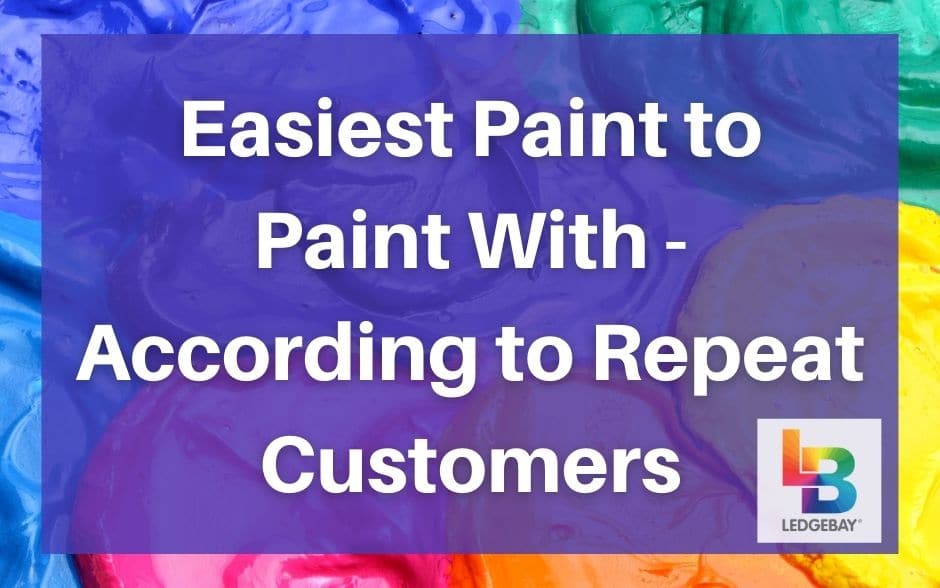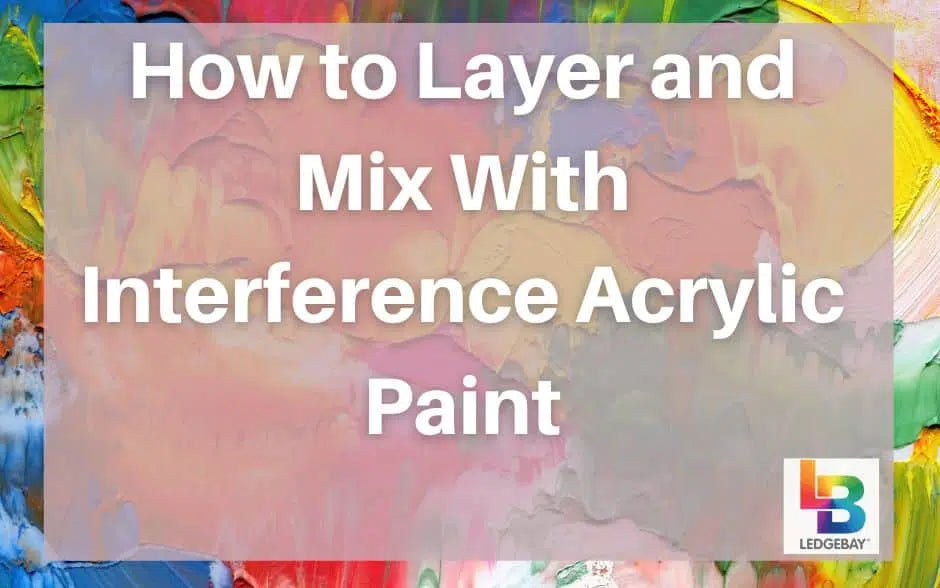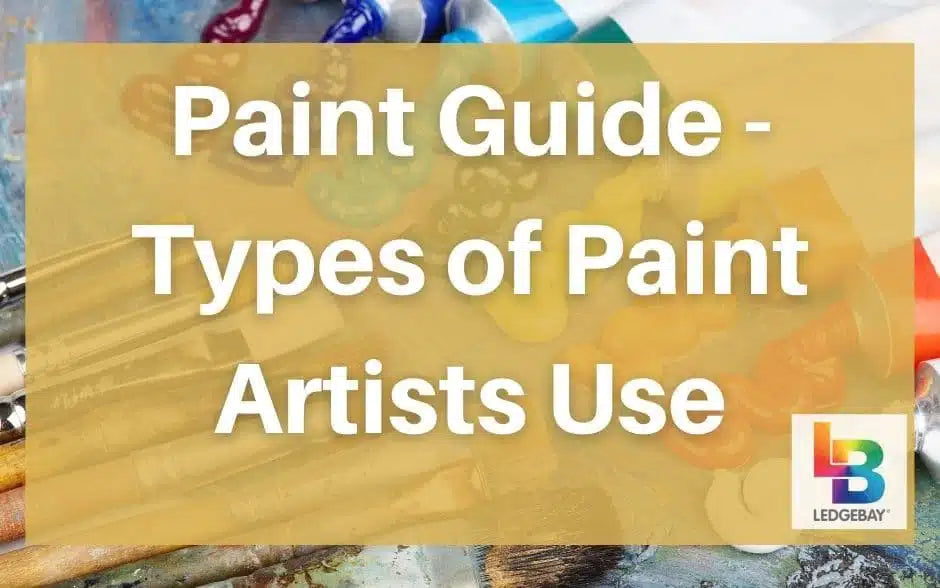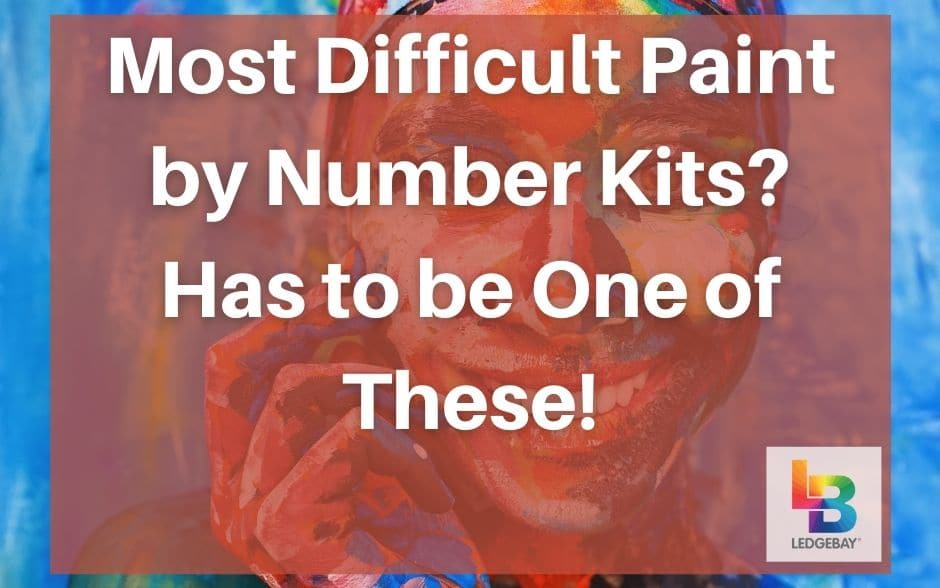Are you planning to explore your artistic side? Want to paint your first piece of artwork? So, what should you choose to draw and finish your art project? In this article, we’ll tell you about the easiestpaint to paint with as a beginner . So, keep on reading.
Powered by your inspiration and talent, you can achieve anything you want. But before you start, you must pick the right tools to start working on your project.
As someone who is still starting their first steps in theworld of art , there are probably different types of paint that you haven’t heard of before. Various types work for different settings, art projects, and experience levels, so choosing which to work with depends on taking all these factors into consideration.
As a beginner, it might be hard to work with all types. However, there are some that are more appealing to beginners and first-timers because they’re more forgiving.
Thanks to our experience in the world of art, we got a chance to testvarious types and how they look in finished art projects. By examining the comments of our loyal customers, we found out that most of them preferred to work with acrylics.
Acrylic is a chemical-based type that is extremely popular. However, it’s water-soluble, so it’s easy to work with. This is why mostpaint by numbers kits come with acrylics that allows beginner painters to bring their artistic creations to life.
Acrylic is easy to clean in case of a spill. It’s also versatile and can be used for various applications.
Compared to other types, acrylic is safer and less toxic, although it contains several chemicals. This is why it’s a safe choice for beginners and children.
By examining hashtagson social media , you can see that#acrylicpaint is quite popular as it’s used by different artists across the world, regardless of their experience level. It works on most surfaces and attaches to most bases, including canvas, wood, and metal.
However, you can alsomix your acrylic paint with different mediums to create a new effect every time. Although this is something done by more professional users, you cangive it a try if you want to experiment.
When it dries, it becomes a little bit darker as the water evaporates. However, it becomes less vulnerable than other types and isn’t affected by humidity, light, or temperature changes. This is why apainting you finished using acrylic is likely to last for a long time.
You can have more control over the texture by increasing or decreasing the amount of water added to mix it. By adding more water, acrylics can mimic watercolors, while adding less water willcreate an effect that resembles oil paint .
However, because it dries fast, youneed to clean your brushes as soon as you’re done painting . If you forget about cleaning youracrylic brushes , they will become too stiff, and you will probably have to throw them away to buy a new set. This is why you need to keep a water glass next to you while you’re working to clean them as you go.
You also need to work quickly as thepaint dries pretty fast, giving you no time to alter or change the shades. If it dries on your clothes, it will be pretty challenging to remove.
Oil paint is common among avid painters. It’s been used sincemedieval times as it brings life to paintings by creating deeper and richer shades than other types.
As the name suggests,oil paint uses color pigments embedded in oil, which can be walnut, sunflower, or linseed to mix the shades. It was invented by theFlemish painter Jan van Eyck , and soon enough became quite popular.
Also known as aquarelle, watercolorpaint is mixed with water and a binder to hold the pigment in suspension. There are several additives and preservatives that can be added to alter the look of watercolors.
Watercolors have become quite popular because it’s easy to work with. It’s also easy to clean in case of a spill.
Thispaint is used to add a transparent effect to the canvas , so the type and quality of paper used will have a huge impact on how your painting looks.
Gouache combines the characteristics of watercolor and acrylic. It’s water-based, just like watercolor, but it contains chalk to make it opaque and more stable while painting. It also dries faster.
Gouache gives a matte finish when it dries and can be used topaint the finest details as it has more texture than watercolors. However, it has a learning curve, and it might not be easy to work with.
When there’s a mistake, you can easily correct it, and you can add layers. Because it’s opaque, you can use it oncolored paper or any other type of canvas .
CLICK HERE to browse our selection of high quality, acrylic paint by numbers kits!
Powered by your inspiration and talent, you can achieve anything you want. But before you start, you must pick the right tools to start working on your project.
What is the Easiest Paint to Use?
[amazon box="B07R3TCSYT"]As someone who is still starting their first steps in theworld of art , there are probably different types of paint that you haven’t heard of before. Various types work for different settings, art projects, and experience levels, so choosing which to work with depends on taking all these factors into consideration.
As a beginner, it might be hard to work with all types. However, there are some that are more appealing to beginners and first-timers because they’re more forgiving.
Thanks to our experience in the world of art, we got a chance to testvarious types and how they look in finished art projects. By examining the comments of our loyal customers, we found out that most of them preferred to work with acrylics.
Acrylic
[amazon box="B08BNNV3JY"]Acrylic is a chemical-based type that is extremely popular. However, it’s water-soluble, so it’s easy to work with. This is why mostpaint by numbers kits come with acrylics that allows beginner painters to bring their artistic creations to life.
Acrylic is easy to clean in case of a spill. It’s also versatile and can be used for various applications.
Compared to other types, acrylic is safer and less toxic, although it contains several chemicals. This is why it’s a safe choice for beginners and children.
By examining hashtagson social media , you can see that#acrylicpaint is quite popular as it’s used by different artists across the world, regardless of their experience level. It works on most surfaces and attaches to most bases, including canvas, wood, and metal.
Perks of Using Acrylics
One of the perks of usingacrylics is that they dry pretty fast, allowing artists to finish their projects in less time. As a result, you can safely add more layers to your drawing without messing it up. Because it uses water to combine the colors, it’s more accessible, so you only use a glass of water toblend the colors .However, you can alsomix your acrylic paint with different mediums to create a new effect every time. Although this is something done by more professional users, you cangive it a try if you want to experiment.
When it dries, it becomes a little bit darker as the water evaporates. However, it becomes less vulnerable than other types and isn’t affected by humidity, light, or temperature changes. This is why apainting you finished using acrylic is likely to last for a long time.
You can have more control over the texture by increasing or decreasing the amount of water added to mix it. By adding more water, acrylics can mimic watercolors, while adding less water willcreate an effect that resembles oil paint .
However, because it dries fast, youneed to clean your brushes as soon as you’re done painting . If you forget about cleaning youracrylic brushes , they will become too stiff, and you will probably have to throw them away to buy a new set. This is why you need to keep a water glass next to you while you’re working to clean them as you go.
You also need to work quickly as thepaint dries pretty fast, giving you no time to alter or change the shades. If it dries on your clothes, it will be pretty challenging to remove.
Pros
- Acrylics mix easily, using nothing but water.
- In case of a spill, you can easily clean it off.
- It’s less toxic than other types.
- It dries fast, so you can have your painting ready in less time.
- Acrylic is versatile, as you can control the final effect by adding more or less water.
- Once it dries, it becomes very stable, so it’s not affected by exposure to light, humidity, or temperature changes.
- You can add different layers to add texture.
- Acrylic is versatile and can be mixed with different mediums to create various effects.
Cons
- Acrylics dry fast, so you need to work quickly, or you won’t be able to adjust your painting.
- If you don’t act fast after a spill, it will become extremely challenging to clean.
- It can ruin your paint brushes if you don’t clean them properly after finishing your painting.
- The color becomes a little darker once it dries.
Other Types of Paint
As a beginner, there are other types of paint that you can experiment with. Each one will create a specific effect, so you can try different textures, shades, and layers tocustomize your painting .Oils
[amazon box="B002E9GUZ4"]Oil paint is common among avid painters. It’s been used sincemedieval times as it brings life to paintings by creating deeper and richer shades than other types.
As the name suggests,oil paint uses color pigments embedded in oil, which can be walnut, sunflower, or linseed to mix the shades. It was invented by theFlemish painter Jan van Eyck , and soon enough became quite popular.
Pros
- Oil creates luminous and long-lasting colors.
- It blends well.
- Because it dries slowly, it provides enough time for the artist to manipulate their artwork.
- It’s easy to correct any mistake as the paint doesn’t dry fast.
Cons
- It takes a lot of time to dry.
- You can accidentally blend colors that weren’t supposed to be blended.
- Exposing the painting to light can change the shades and make them lighter. You can keep the painting in the dark to reverse this effect.
Watercolors
[amazon box="B08BFV5N3M"]Also known as aquarelle, watercolorpaint is mixed with water and a binder to hold the pigment in suspension. There are several additives and preservatives that can be added to alter the look of watercolors.
Watercolors have become quite popular because it’s easy to work with. It’s also easy to clean in case of a spill.
Thispaint is used to add a transparent effect to the canvas , so the type and quality of paper used will have a huge impact on how your painting looks.
Pros
- It’s easy to clean and doesn’t ruin your brushes.
- Once out of the tube, the paint won’t get ruined. You can keep it on the palette and mix it with water whenever you want to start painting.
- Most watercolors are non-toxic and more affordable than other types.
Cons
- It can be absorbed by the canvas, so you need to make sure that you’re picking the right one.
- It’s more prone to damage.
- A tiny spill of water can make your paint run years after it has been finished.
Gouache
[amazon box="B084V515RY"]Gouache combines the characteristics of watercolor and acrylic. It’s water-based, just like watercolor, but it contains chalk to make it opaque and more stable while painting. It also dries faster.
Gouache gives a matte finish when it dries and can be used topaint the finest details as it has more texture than watercolors. However, it has a learning curve, and it might not be easy to work with.
When there’s a mistake, you can easily correct it, and you can add layers. Because it’s opaque, you can use it oncolored paper or any other type of canvas .
Pros
- Has a nice matte finish when it dries.
- It looks like opaque watercolor paint.
- It contains less water than watercolor paint, so it dries faster.
- You can use it on thin and colored paper.
Cons
- More difficult to work with.
- The colors can be harder to blend.
- The shades can be too dark, and you need to add white to make lighter shades.
Easiest Paint to Use - Wrap Up
There are different types you can experiment with, but acrylic is definitely the easiest to work with. However, there are others that you can also experiment with.CLICK HERE to browse our selection of high quality, acrylic paint by numbers kits!











